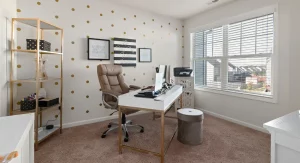Creating a Retirement Budget: How to Plan for Your Expenses
By TOI Staff
February 26, 2023
Update on : February 26, 2023

Retirement can be an exciting time, but it can also be scary if you don’t have a solid plan for how you will cover your expenses. Whether you’re 10 or 20 years away from retirement, it’s never too early or too late to start creating a budget that will help ensure you have the financial stability you need when you leave the workforce. In this article, you’ll go over some of the critical steps for creating a retirement budget and some tips for saving for retirement.
Understanding Your Current Expenses
The first step in creating a retirement budget is understanding your current expenses. This will help you determine how much money you will need each month to cover your expenses in retirement. Some expenses, such as housing and food, may stay the same, while others, like transportation, may change. So it’s essential to be realistic about your expenses and consider factors like inflation, which can increase the cost of goods and services over time.
Anticipating Future Expenses
Once you understand your current expenses, you need to anticipate any future expenses you may have in retirement. This could include things like healthcare expenses, travel, or hobbies. It’s essential to consider these costs to ensure you have enough money saved to cover them.
Estimating Your Retirement Income
The next step in creating a retirement budget is to estimate your retirement income. This will include any money you have saved in retirement accounts like a 401(k) or IRA, as well as any Social Security benefits you may be eligible for. It’s important to be realistic about your retirement income and consider factors like taxes, inflation, and investment returns.
Creating a Retirement Budget
Now that you have a good understanding of your current expenses, future expenses, and retirement income, you can create a retirement budget. This will help you see where your money is going and adjust as needed.
Being flexible with your budget is essential, as things can change over time. You can start by creating a basic budget and then making adjustments as needed. You may also want to consider creating a contingency plan for unexpected expenses. This could include setting aside a portion of your budget for emergencies or having a line of credit you can access if needed.
Saving for Retirement
The final step in creating a retirement budget is ensuring you save enough. This is where the keyword “saving for retirement” comes in. So it’s essential to start saving as early as possible, even if it’s just a tiny amount, to take advantage of compound interest. Adobe DC experts state, “As you begin your retirement strategy, keep a proper record of your financial documents.”
Many retirement accounts are available, so it’s essential to research and find the right one. You may also want to consider working with a financial advisor to help create a savings plan and ensure you are on track to reach your retirement goals.
Creating a retirement budget can seem overwhelming, but ensuring you have the financial stability you need is vital. By understanding your current expenses, anticipating future expenses, estimating your retirement income, creating a budget, and saving for retirement, you can take control of your finances and feel confident about your future.
















